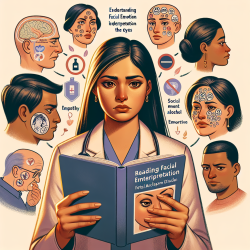Introduction
The COVID-19 pandemic has reshaped the landscape of healthcare delivery, with telemedicine emerging as a critical tool for maintaining access to care. A recent study, "Telemedicine among Adults Living in America during the COVID-19 Pandemic," provides valuable insights into the demographic patterns of telemedicine use. This blog explores how practitioners, especially those working with children, can leverage these findings to enhance their practice and improve outcomes.
Understanding Telemedicine Usage Patterns
The study reveals significant variations in telemedicine use across different demographic groups. Notably, individuals with disabilities, older adults, and Black people reported higher levels of telemedicine use. These findings highlight the potential of telemedicine to bridge access gaps for vulnerable populations. However, it also underscores the need for targeted strategies to address barriers such as the digital divide.
Implications for Practitioners
For practitioners in speech-language pathology and related fields, understanding these patterns is crucial. Here are some actionable insights:
- Focus on Accessibility: Ensure that teletherapy platforms are accessible to children with disabilities. This may involve using platforms that support closed captioning or are compatible with assistive technologies.
- Tailor Approaches for Older Caregivers: Older caregivers might require additional support to navigate teletherapy platforms. Providing clear instructions and offering tech support can enhance their engagement.
- Cultural Competence: Recognize the cultural factors influencing telemedicine use among different ethnic groups. Tailoring communication and engagement strategies can improve participation and outcomes.
Encouraging Further Research
While the study offers a comprehensive overview, it also highlights the need for further research. Practitioners are encouraged to explore the following areas:
- Longitudinal Studies: Investigate the long-term impact of telemedicine on child outcomes, particularly in speech and language development.
- Technology Adoption: Examine the factors influencing technology adoption among caregivers and how these impact therapy engagement.
- Equity in Access: Research strategies to mitigate the digital divide and ensure equitable access to teletherapy services for all children.
Conclusion
Telemedicine has the potential to transform healthcare delivery, offering new opportunities to improve access and outcomes for children. By understanding and addressing the demographic factors influencing telemedicine use, practitioners can better support their clients and contribute to more equitable healthcare systems.
To read the original research paper, please follow this link: Telemedicine among Adults Living in America during the COVID-19 Pandemic.










